Mikhail Katkoff, who recently left Supercell, shared his thoughts on why Plants vs. Zombies 2 is an unsuccessful project for PopCap and EA in his blog.
Below is a translation of his article. The original can be found here.
Personally, I think Plants vs. Zombies 2 (PvZ2) is a great game. She took all the good things from the first part and seasoned it with new content, a map and gesture bonuses. However, the biggest change is the departure from the paid format to free-to-play.
If you look back, it may seem that this step was the right one. PvZ2 briefly entered the top 20 apps for iPhone and iPad. This is a good result for, in fact, a paid game, but it seems to me that the top 20 is not at all what PopCap and EA expected from the game. Considering EA’s marketing power, PvZ2’s flight past the cash register is evidence of its weak monetization.
In this article, I want to present 4 reasons why PvZ2 is unlikely to ever enter the box office top ten.
1. The game cannot be played anywhere
People play mobile games at home, where they have plenty of time and, as a rule, a minimum of distractions. And also people play on public transport, at work, and even solitaire in the bath. Due to different environments, the length of the session and the amount of attention devoted to the game varies, which is a critical factor.
The developer has a choice. Or create a game with the expectation that it can be played everywhere, allowing players to enjoy the project in free minutes throughout the day. Or ignore it, hope that the player will launch the project when he gets home, unless, of course, he continues to play the project he has been playing all day.
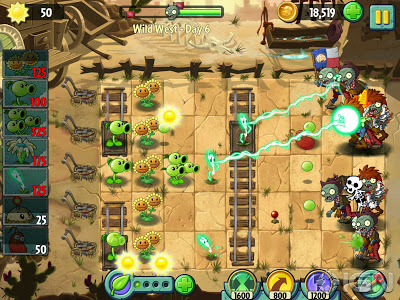
Each level takes a lot of time and requires 100% concentration. Because of this, PvZ2 is completely unsuitable for short sessions in places where something can constantly distract
PvZ2 is a good example of ignoring the possibility of distractions.
Firstly, all sessions are long. It takes about 4 minutes to complete one level. This is a lot compared to the minute a player spends to spend another heart in Candy Crush Saga. Secondly, playing PvZ2 requires a lot of concentration, reaction and not one, but several fingers. Distracted – lost the sun. Once again I looked at something – I lost the level. This is far from a game where you can talk.
Don’t get me wrong. I’m not saying that for success, a mobile game must necessarily fit under all possible circumstances in which a player may be. Many titles avoid this problem by bringing variety to the game. For example, in Clash of Clans, combat sessions require attention, because there is a risk that if you tap in the wrong place, your attack will be repelled. But at the same time, building, gathering resources, training troops, as well as correspondence within the game are easily carried out on the go.
2. Lack of social gameplay
Playing with real people, especially those the player knows, is necessary for retention and monetization. Imagine Hay Day without the opportunity to trade with other players? And what would happen to Candy Crush Saga without a map showing how far your friends have gone ahead and how they have passed this or that level.
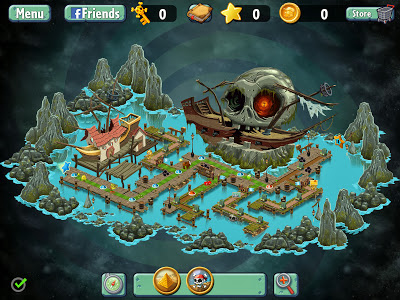
Despite the support of Facebook Connect and a beautiful map, there are no social elements in PvZ2
PvZ2 encourages players to connect their Facebook account to the game. PvZ2 also demonstrates the player’s progress on the map.
But despite these two elements that provide sociality in games with levels, PvZ2 does not show friends on the map and there are no leaderboards in it. And it’s sad.
Monetization is driven by competition. The competition in free-2-play games with levels is based on a map that shows the progress of the opponents, and leaderboards for each level. In the absence of the first and second PvZ2, it remains only to wave the monetization handle.
3. Fear of disappointing players
The main free-2-play mantra goes something like this: the game should be easy to enter. This is achieved by constantly rewarding players and developing in them a constant expectation of the next achievement during the passage of each level. Games like FarmVille, Sims Social, and Hay Day especially adhere to this rule. Until they are sure that the project has hooked the player, they will not “milk” him. In a nutshell, these games are not about skill. The success and progress of the user is directly related to the time he spends on the game (or the money poured into accelerating progress).
In some projects, the mantra works perfectly. But here everything depends on the genre. In builders, this approach works great, but for puzzles and arcades, a different one is needed. As we all know, losing in Candy Crush Saga, Jelly Splash or Angry Birds only encourages us. And passing a difficult level gives you a sense of superiority.
But PvZ2 is incredibly simple. It is not difficult to pass the levels. Because of this, the game is boring. Most people I know have stopped playing PvZ2 due to insufficient difficulty. However, none of them stopped playing Candy Crush Saga even if they were stuck on the same level for more than a week.
The lack of complexity is reflected not only in the retention of users, but also in the reduction in the number of IAPs. PvZ2 offers to purchase bonuses that help pass levels for real currency. But in order to want to purchase these bonuses, it must be difficult for the player, it is necessary for him to understand that without them he will not pass the level (or it will be very difficult for him to do it). There are no such levels, there is no need for bonuses, there is no financial income.
4. There is no game cycle
In my opinion, the main thing in a free2-play game is the game cycle. It demonstrates the full session from the point of view of mechanics. Any restriction in the case of free-2-play is a necessary part of such mechanics.
It is not necessary for the cycle to be complex. For example, in Candy Crush Saga there is only one limitation – the number of hearts. Hearts are spent on every attempt. Hearts run out – the game session ends. Then the player can either wait, or ask for hearts from friends, or pay for them.
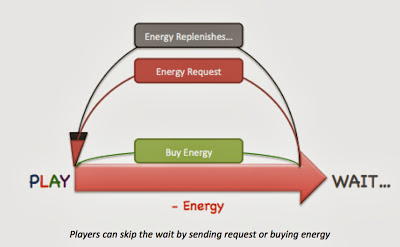
In Candy Crush Saga games, the loop is very simple, but very effective
Hay Day, on the other hand, has more complex mechanics.
You start by planting the crops that start the loop for the first time. As soon as the wheat is ripe, the player collects it and uses it in the production of other resources. This starts an additional cycle, the duration of which depends on the resource that the user wants to produce. Yes, after each cycle, the player can either sell the resource or use it to launch a new production chain.
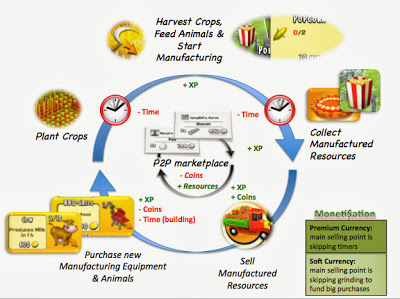
Hay Day has quite a usual game cycle for builders and farms
The main task in Hay Day from the point of view of game design is to convert time into game currency.
The more time a player spends on refining a product, the more the time spent playing the game is devalued. A player interested in efficiency will make more money by constantly being in the game and selling basic things, instead of producing something complex that requires a lot of time. However, from the player’s point of view, everything is fine: he spends hours on the production of a pumpkin, sells it for 100 coins, although he could save time, and just sell ten sheaves of wheat for the same period for 15 coins each.
There are no such restrictions in PvZ2, which means there is no game cycle. The ideal game cycle for this game would look about the same as in Candy Crush Saga, where the number of available sessions is limited by the number of hearts.
I believe that an energy-based game cycle would increase the monetization of the project, creating a constant demand for energy and increasing the demand for bonuses. When a loss has a price, victory becomes more important.
Plants vs. Zombies 2 – Paid free game
In fact, PvZ2 is a paid game without a price tag. Of course, it offers IAP, but free-to-play is not limited to in-game micropayments. There is no game cycle without restrictions, it is very difficult to create demand for IAP without a game cycle. The number of IAPs is also small due to the lack of social buns needed for cooperation and competition between players.
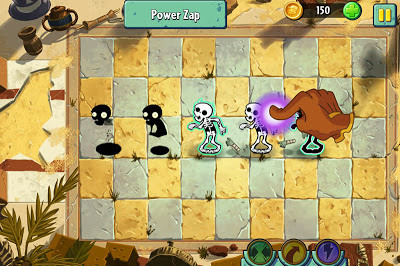
Free-to-play is not just about IAPs
Transforming a paid franchise into a free-to-play is very difficult from an organizational point of view.
In the industry itself, developers continue to argue among themselves about exactly how to implement f2p, for fear of upsetting players. And it seems to me that it is fundamentally wrong to think like that. For some reason, many people think that free-2-play is something that players don’t like. But if this were really the case, the top charts would look completely different.
A source: http://www.deconstructoroffun.com
